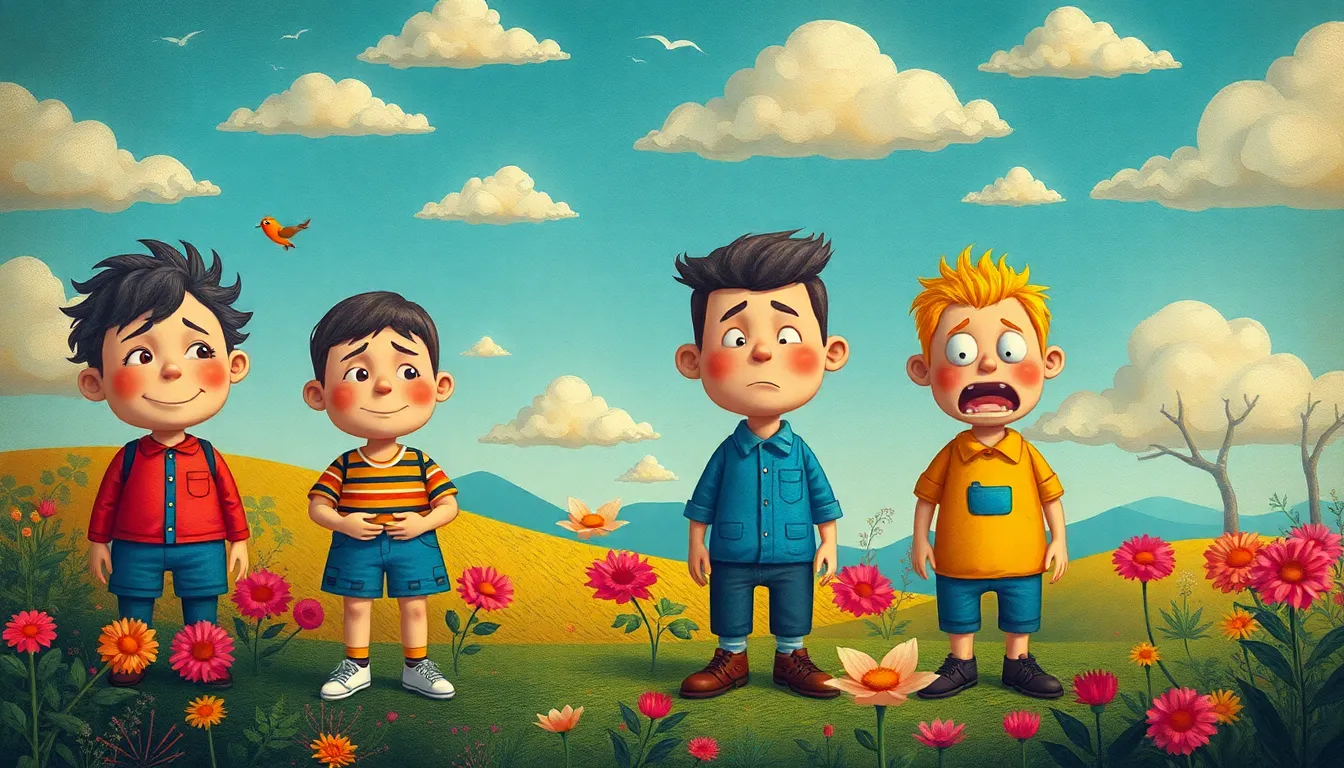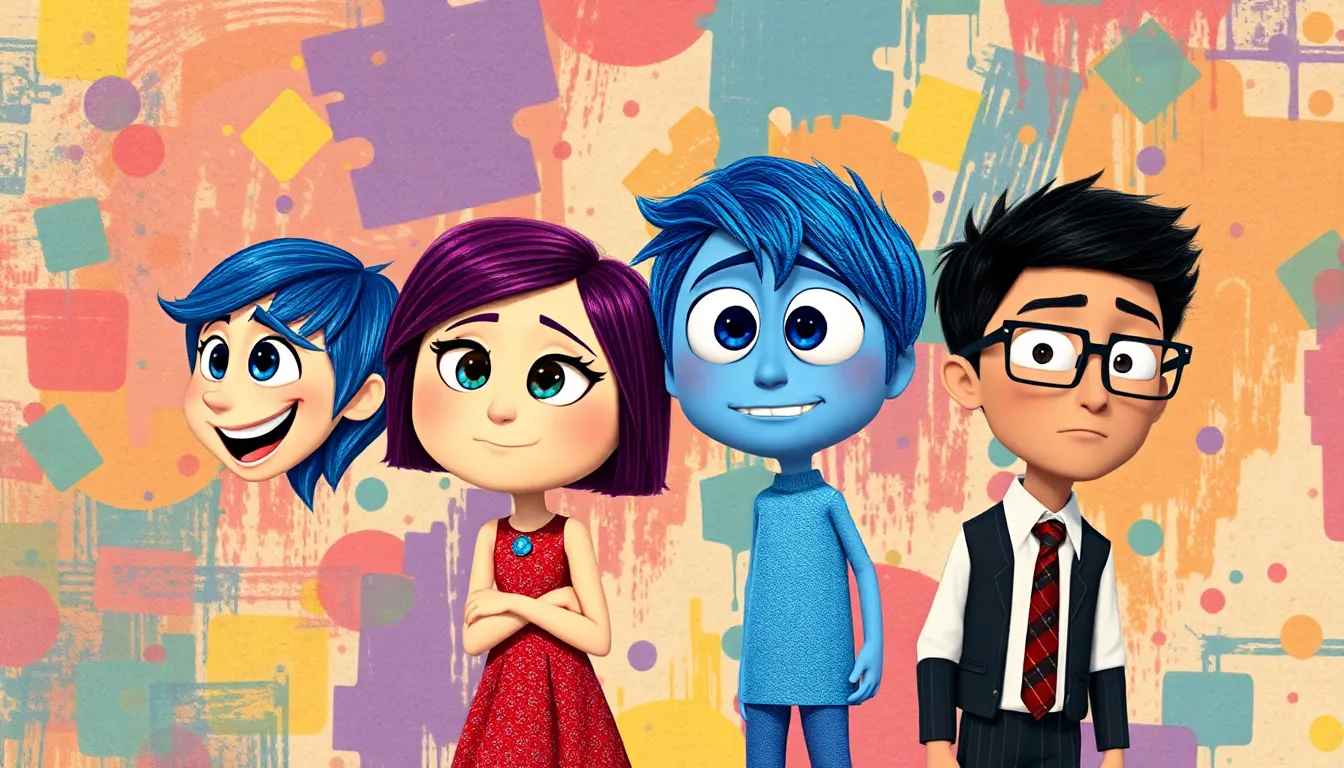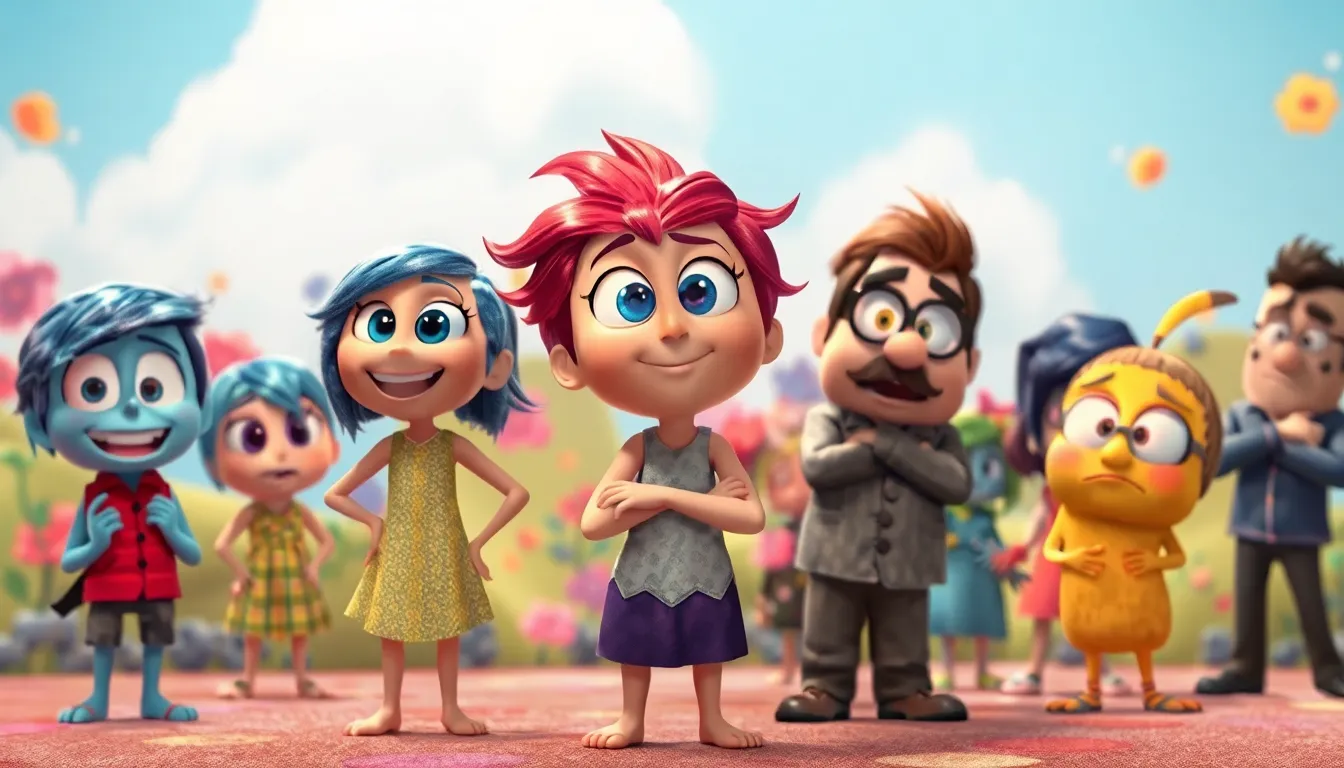In the colorful world of “Inside Out 2,” emotions aren’t just feelings; they’re characters with personalities that could rival any blockbuster star. From the whimsical highs of Joy to the sulky depths of Sadness, each emotion plays a pivotal role in navigating the chaos of life. But what happens when those emotions face new challenges?
As they dive into the complexities of growing up, viewers get a front-row seat to the hilarious and sometimes cringe-worthy moments that come with it. Imagine Anger trying to keep his cool while navigating the trials of adolescence or Fear taking a backseat for once. Buckle up for a rollercoaster ride through the mind, where laughter and heartfelt moments collide, proving that understanding emotions can be just as entertaining as it is enlightening.
Table of Contents
ToggleOverview of Inside Out 2 Characters
“Inside Out 2” introduces a fresh ensemble of emotions that resonate with the challenges of adolescence. Joy continues to embody positivity, striving to keep balance amidst emotional turmoil. Sadness takes on a more profound role, helping others process their feelings and recognize the value of vulnerability.
Anger faces new dilemmas in teenage years, often struggling to express frustration without causing chaos. In contrast, Disgust evolves, learning to navigate issues of identity and peer pressure while maintaining her strong opinions. Fear, although more subdued, shows growth in his ability to confront situations that once felt daunting.
Several new emotions join the cast, including Confidence and Insecurity, personifying the complexity of self-image during adolescence. Confidence radiates self-assuredness, often encouraging others to embrace their strengths. Insecurity, however, wrestles with self-doubt, amplifying the internal battles many face during this developmental stage.
Characters interact dynamically, reflecting the frequent shifts in emotional states during growing up. Each character’s unique perspective provides insight, creating relatable scenarios that resonate deeply with audiences. The humor sprinkled throughout these interactions maintains engagement, while the emotional depth fosters understanding.
Through these character portrayals, “Inside Out 2” explores the evolving landscape of emotions. It emphasizes that all feelings hold significance, encouraging acceptance and empathy. Audiences are invited to connect with these characters as they navigate life’s complexities, showcasing that emotions deeply influence experiences.
Emotions Represented in Inside Out 2


Inside Out 2 introduces a rich tapestry of emotions, illustrating the complexities faced during adolescence. Each character uniquely portrays different feelings, allowing audiences to connect emotionally.
Joy’s Evolution
Joy’s character maintains her signature positivity, but she experiences growth. She learns to balance happiness with more nuanced emotions, notably empathy. As situations become more challenging, Joy becomes more supportive, recognizing moments when others need understanding instead of just cheer. Her evolution demonstrates how joy can coexist with other feelings, revealing the importance of emotional adaptability.
Sadness’s Role
Sadness plays a crucial part in guiding others through difficult emotions. Instead of solely being a counterpoint to joy, Sadness expands her role to actively help characters process their feelings. She encourages emotional expression, showing that acknowledging sadness can lead to healing. This deeper involvement highlights the integral nature of sadness in emotional growth, illustrating its strength in nurturing resilience among peers.
New Emotions Introduced
New characters bring fresh perspectives within Inside Out 2. Confidence embodies self-assuredness, encouraging characters to embrace their identities. Meanwhile, Insecurity represents self-doubt, often challenging those around her. These contrasting emotions underscore the struggle between belief in oneself and uncertainty. The interactions among Confidence, Insecurity, and the established emotions create a dynamic environment that mirrors real-life adolescent experiences.
Character Relationships and Dynamics
The relationships among the emotions in “Inside Out 2” create a rich tapestry of interactions that drive the narrative forward. Each character embodies unique traits, leading to dynamic exchanges that illustrate the complexities of adolescence.
Interactions Between Emotions
Joy’s supportive nature fosters collaboration among the emotions. Sadness plays a crucial role in helping others articulate their feelings, deepening connections. Anger’s frustration often sparks debates with Joy, showcasing their contrasting approaches to challenges. Disgust’s insights provide a lens for Riley’s social observations, prompting thoughtful interactions. Confidence often uplifts the group, inspiring a sense of belonging, while Insecurity brings doubts into play, leading to important conversations about self-worth. These interactions reflect the fluidity of emotional experiences during adolescence, making them relatable.
Impact on Riley’s Journey
Understanding emotions greatly influences Riley’s journey throughout “Inside Out 2.” Joy helps Riley find happiness even in difficult scenarios, while Sadness enables her to embrace vulnerability and resilience. Anger’s conflicts guide Riley in managing frustration, offering lessons in patience. Disgust often signifies social values and peer dynamics, affecting Riley’s choices. Furthermore, Confidence encourages her to explore new interests, while Insecurity highlights the struggles many face during adolescence. This interplay of emotions shapes Riley’s identity, illustrating how each feeling contributes to her growth and emotional intelligence.
Themes Explored Through Emotions
“Inside Out 2” delves into multiple themes through its vibrant emotional characters. The importance of balance among emotions emerges as a central theme. Joy’s journey highlights the significance of integrating happiness with empathy, illustrating that positivity doesn’t exist in isolation. Similarly, Sadness plays a crucial role in helping others navigate their emotions, emphasizing the need for emotional expression to build resilience.
Another theme centers around identity and self-perception. Confidence and Insecurity depict the struggles of adolescence, with Confidence uplifting others while Insecurity embodies self-doubt. Their interactions spark discussions about self-worth, showcasing how individual emotions influence one’s view of themselves.
The dynamics between the emotions introduce themes of collaboration and conflict. Joy’s support for others encourages teamwork, which fosters deeper interpersonal connections among the characters. Anger often brings tension to relationships, leading to debates that illuminate contrasting emotional approaches. Discussions sparked by Disgust offer insights into social situations, revealing the complexities of belonging and acceptance.
Through various interactions, the film highlights themes of acceptance and empathy. All emotions, regardless of their nature, contribute to a holistic understanding of experiences. Each character showcases how feelings intertwine, encouraging viewers to appreciate the fluidity of emotional experiences. Thus, “Inside Out 2” captures the essence of growing up, presenting a rich tapestry of themes that resonate deeply with audiences.





